Tel Aviv
Tel Aviv (Hebrew: תל אביב, Arabic: تل أبيب) is the second largest city in Israel (after Jerusalem), and the largest metropolitan area. It is on the Mediterranean coast, about 60 km northwest of Jerusalem and 100 km south of Haifa. The official name is Tel Aviv-Yafo (תל אביב-יפו), and reflects the fact that the city has grown beside (and absorbed) the ancient port city of Yafo (English: Jaffa, Arabic: يافا Yafa), to the south of the new city center. Tel Aviv is home to most foreign embassies in Israel.
On 18 May 2019, the city will host the 64th Eurovision song contest following a week of performances and parties. Artists from 41 countries will each present an original song to compete for the title in in a final concert that will be broadcast around the world.
Districts
Tel Aviv is a rapidly growing city in the midst of an exciting transition from medium-sized urban center to bustling international metropolis. Its booming population, energy, edginess and 24-hour lifestyle give the city a cosmopolitan flair comparable to few other cities in this part of the world.
Tel Aviv is not really divided into districts, but rather into over 50 different neighborhoods. Some neighborhoods are really distinctive areas with different cultures (e.g. Neve Tzedek, Florentin, Ramat-HaHayal), while others are simply indicating a geographical area. Tel Aviv grew mainly from the south to the north, so the further you go to the north you will encounter newer buildings and wealthier communities.

| North The wealthiest district of Tel Aviv (one of the wealthiest areas anywhere in Israel) is north of the Yarkon River. This region is very green, quiet, and suburban compared to the rest of Tel Aviv. The Yarkon Park, Tel Aviv University, and some important museums are here. |
| Center This is Tel Aviv as most people know it - containing tourist attractions, hotels, beaches, office buildings, and shopping areas. The center is confined by Yehuda Halevi and HaRakevet streets to the south, the Yarkon river to the north, and Ayalon Highway to the east. This district varies from trendy historic neighborhoods in the south, to office skyscrapers in the east, to beachline hotels in the west, to the quiet residential "Old North" neighborhoods in the north. |
| South & East The south is the poorer district of Tel Aviv, but some of its neighborhoods have become young and trendy. It is also home to many foreign workers and illegal immigrants from southeast Asia and sub-Saharan Africa. The east is an often-forgotten residential district east of Ayalon Highway. The two overlap in the southeastern neighborhoods. The New Central Bus Station and Hatikva and Levinsky food markets are in South Tel Aviv. |
| Jaffa (Yafo in Hebrew, Yaffa in Arabic) is one of the world's oldest ports, from which Tel Aviv grew out in the 20th century. It was here that the prophet Jonah started the journey that left him in the belly of a fish, Andromeda was saved from a sea monster by Perseus, and Peter the Apostle received a vision marking the split between Judaism and Christianity. Nowadays, Tel Aviv's Muslim and Christian populations are concentrated in Jaffa. Other than the port, main attractions are the Old City and a flea market. |
Understand

The smallish gulf of Jaffa was the site of a fortified port town for at least 4000 years. During the 19th century the town’s population grew from about 2,500 (1806) to 17,000 (1886). The old city walls could no longer contain the population, and they were destroyed in the 1870s. New, more spacious neighborhoods started to appear.
Tel Aviv (meaning literally "Hill of Spring") was founded in 1909 by a group of distinguished Jewish residents of Jaffa. They envisaged a European-style garden suburb, with wide streets and boulevards. Leaving Jaffa wasn’t, however, only a question of an upgrade in lifestyle. Moving out of the Arab-dominated town also represented their belief in the Jewish national movement, Zionism. Before being a city, Tel Aviv was one of the many titles of Theodor Herzl's utopian Zionist book - The Old New Land. Setting out with a grand vision, the 60 Tel Aviv founders started out by building the first mid-eastern urban center with running water, no small wonder in that part of the world in 1909. Houses from this period can still be seen in the Neve Tzedek neighborhood.
Tel Aviv grew steadily under Ottoman law until World War I. By the end of the war the British took over the Holy Land: an event the Jewish community saw as encouraging, while the Muslim community viewed it as a turn for the worse after Islamic rule. Tel Aviv was seen by nearby Arabs as a symbol of the growing Jewish presence in their homeland. In May 1921, an Arab mob attacked a Jewish immigration center, killing dozens of Jews. Another group broke the windows of stores in the Jewish street in Jaffa, and a mob armed with knives and sticks made its way towards Tel Aviv. Before 1921 most Jews worked and lived in Jaffa; after the attack, thousands of the 16,000 Jews of Jaffa moved north to Tel Aviv. The suburb had become a city and within a decade, Tel Aviv had become the center of culture, commerce and light industry for the entire Jewish population of the country (and the British soldiers). 1938 marked the opening of Tel Aviv port, an important milestone in the end of its dependency on Jaffa. By this time, Tel Aviv was already the biggest city in the country, with 130,000 residents. After Israel’s declaration of independence in 1948, Jaffa became a district of Tel Aviv and the city's name was officially changed to Tel Aviv-Yafo.
Today, Tel Aviv-Yafo is the heart of a thriving metropolis. The greater metropolitan area is home to approximately 3.1 million people, with around 392,700 in Tel Aviv-Yafo itself, making it the second largest city in Israel after Jerusalem. Major suburbs of Tel Aviv include Bat Yam, Holon, Ramat Gan, Givatayim, Bnei Brak, Petah Tikva, Rishon LeZion, Ramat HaSharon, Rehovot and Herzliya. The entire metropolitan area is often referred to as Gush Dan.
While Jerusalem is Israel's capital city, where most government departments are, Tel Aviv and its satellite cities form the economic and cultural center. Tel Aviv is known as "the city that doesn't stop", and you will find that the nightlife and culture are active around the clock. In summer it is not unusual to see the beach boardwalk bustling with people at 04:00, and the clubs and bars usually pick up around midnight until morning, giving Tel Aviv a well deserved reputation of being a party town. It is the pinnacle of secular life in Israel.
Tel Aviv is likely the most liberal city in Israel and in the Middle East - as it is no less liberal than the major cities of Western Europe. It has a bustling civil society and is home to many activist movements and NGOs. Its residents tend to have liberal attitudes towards gay and lesbian rights, and, in fact, Tel Aviv hosts the largest gay pride parade in Israel. It is also a destination for gay Palestinian refugees, unable to pursue their lifestyle in the Palestinian territories. With its liberalism comes a dose of sophistication and some will say detachment, and Tel Aviv is often dubbed "The Bubble" or "Medinat Tel Aviv" ("The State of Tel Aviv") by residents and non-residents alike. Some ultra-Orthodox Israelis have even dubbed the city a modern day "Sodom and Gomorrah", due to its hedonistic reputation.
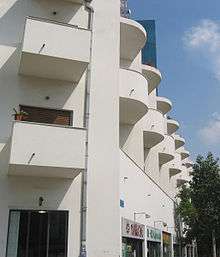
In July 2003 Tel Aviv-Yafo was declared a cultural UNESCO World Heritage site in recognition of the many "International" (or "Bauhaus") style buildings built here during the 1930s-50s. As this style emphasized simplicity and the color white, Tel Aviv is also called the White City.
Orientation
Tel Aviv lies alongside the Mediterranean coastline. Most points of interest for tourists are in the center district, a rectangle defined by the sea to the west, the Yarkon River to the north, the Ayalon highway to the east, and Salame Road to the south. Within this district, most of the attractions are to the west of Ibn Gabirol street, a large north-south street which divides the district into two roughly equal halves.
Tel Aviv developed from south to north. At the southwest corner of the center district you will find old Jaffa. To its north is the first Jewish neighborhood outside Jaffa, Neve Tzedek (meaning "Oasis of Justice"). To Neve Tzedek’s east is Florentin (a 1920s light-industry quarter founded by Jews from Salonika in Greece, that has turned into a trendy neighborhood for young people, albeit with a large population of older and poor people); and then the Central Bus Station area, now home to foreign workers from around the world.
To the north of Neve Tzedek is "Kerem Ha'Temanim" (the Yemenite Vineyard), a crowded but picturesque neighborhood dating to the early 20th century. East and north of here lies the city center, a chiefly residential area built in the 1920s and 1930s, where the majority of Bauhaus ("International") style architecture is to be found. Further north and east, the "old north" (not to be confused with "the north" on the other side of the Yarkon), is a more spacious residential area built during the 1940s and 1950s.
Tel Aviv residents often speak of a north-south divide in Tel Aviv-Yafo. The north is usually associated with a continental, chic, and suburbanite lifestyle centered around Kikar haMedina and "Ramat Aviv". To the south, the city takes on a more working-class and Middle Eastern, albeit evermore trendy, urban feel. North Tel Aviv is generally residential and family-oriented; Tel Aviv Center is the hipper-younger area with many single people and couples in their 20s and 30s; south Tel Aviv is a rapidly gentrifying area with a mixed population - from older working-class people to artists to migrant African workers.
Culture
- Watch out for bikes and scooters on main sidewalks. Tel Aviv's traffic is horrible and there is no metro system yet, so many people use them to get around.
- Smoking in restaurants is limited to specific parts of their outdoor seating - smoking is illegal in restaurants, but the law is rarely enforced.
- Dogs wearing muzzles on public transit are not aggressive monsters - there's a (sporadically enforced) law requiring muzzles on buses and trains.
- It's socially acceptable to swat at street cats (still not nice!) but dogs are beloved in Tel Aviv.
- Taking kids to cafes and restaurants is completely normal, and the malls usually have kid play and breast-feeding areas.
- Israelis can be pretty aggressive about cutting in lines; don't feel guilty about body-blocking little old ladies, as they have no problem taking advantage of tourists to cut half a line.
- Shabbat is less dramatic in Tel Aviv than the rest of Israel, but stores like pharmacies and supermarkets close on Friday afternoon until Sunday morning. Whether restaurants and bodegos ("makolet"s) are open during Shabbat varies by neighborhood.
Get in
| Tel Aviv (Temperature: 1987–2010, Precipitation: 1980–2010) | ||||||||||||||||||||||||||||||||||||||||||||||||||||||||||||
|---|---|---|---|---|---|---|---|---|---|---|---|---|---|---|---|---|---|---|---|---|---|---|---|---|---|---|---|---|---|---|---|---|---|---|---|---|---|---|---|---|---|---|---|---|---|---|---|---|---|---|---|---|---|---|---|---|---|---|---|---|
| Climate chart (explanation) | ||||||||||||||||||||||||||||||||||||||||||||||||||||||||||||
| ||||||||||||||||||||||||||||||||||||||||||||||||||||||||||||
| ||||||||||||||||||||||||||||||||||||||||||||||||||||||||||||
By plane
Ben Gurion Airport
Tel Aviv's (and Israel's) main entry point from abroad is 🌍 Ben Gurion International Airport TLV IATA (referred to by its Hebrew initials Natbag by locals). Overseas airport departure boards always call it "Tel Aviv", but in Israel you should refer to it as "Ben Gurion", as the city has its own small domestic airport. Ben Gurion TLV is 15 km southeast of the city in the town of Lod (or Lydda) - don't use that name either as the access routes are different. You can reach downtown by train, taxi, or by hired car it's a 20-min drive followed by a very long search for parking. There is no direct bus or sherut taxi to Tel Aviv from Ben Gurion, although traveling by bus is possible.
On Shabbat you will have a hard time reaching or leaving the airport. There's no bus or train; taxis still go but are extra busy, and charge extra. Best not choose a flight between Friday 15:00 and Saturday 20:00 to or from Israel.
By train: The airport train station is just below Arrivals in Terminal 3. Direct trains to Tel Aviv take 15-20 min and cost ₪13.50 one-way. Buy a ticket from the cashier or from an automatic machine; use it at the entry gate and again to exit at your arrival station. Better still, buy & use a Rav-Kav transport smart card, because you'll need one in the city (see "get around"), you may as well buy one now. Trains run around the clock Sunday-Thursday, with 3 trains per hour most of the day and one per hour at night. There are no trains on Friday or Saturday - the last to town is Th 23:35, the first Su 05:35. All trains stop at all four Tel Aviv stations during the day, which in order of arrival from the airport (south to north) are Tel Aviv HaHagana (8 min travel), Tel Aviv HaShalom (13 min), Tel Aviv Merkaz/Savidor (18 min) and Tel Aviv University (25 min). HaShalom and Merkaz/Savidor are the closest to most hotels and sights; trains at night may only stop at these two. Many trains continue all the way north to Haifa and Nahariya. Signage and announcements are in Hebrew and English.
By taxi: Working 24 hours a day, 7 days a week, this is the most comfortable and expensive way to reach the city center, with a typical ride price of around ₪120. If you travel with a friend or two, it can be a good idea to share a taxi. It is acceptable to sit in the front seat in Israeli taxis. Taxis are required by law to use the taxi meter, unless agreed otherwise by the passenger and driver, and a typical ride to the city center should not take more than 15–20 min, without heavy traffic. Do not accept fix-priced rides with taxi drivers unless you're sure of what you are doing; you will usually end up paying more than you could have had you asked to use the meter.
By bus: You may save a few shekels by taking buses rather than the train to Tel Aviv, but you will lose lots of time and likely get yourself lost. From outside the terminal, take Egged's Line 5 to 🌍 El Al Road Junction ("Tzomet El Al"), and from there take a second bus to Tel Aviv. The last line 5 bus leaves the airport at 21:55, and in the opposite direction from El Al Junction—at 21:15 (estimated). When going to the airport, ask the driver for a ticket that includes access to line 5, in order to avoid paying an extra fare for that line.
Hitchhiking: You might want to skip the trouble of finding a taxi (especially on Shabbat) and hitchhike via El Al Junction, from where you can find buses to Tel Aviv and Jerusalem, as well as into the airport (bus no. 5). You might even walk here from/to Terminal 1, which has a regular shuttle bus to Terminal 3. Hitchhiking between the airport and Tel Aviv, use the roads north around the airport - the roads south are highways and inappropriate for hitchhiking.
Sde Dov
Tel Aviv has another airport, 🌍 Sde Dov (SDV IATA), off Levi Eshkol (1 km north of Yarkon River). This is an almost exclusively domestic airport, with flights to Eilat Ramon almost hourly, but occasionally also to Lanarca. It's small with few facilities. It's supposed to close in Nov 2019, transferring its flights to Ben Gurion and re-developing the area for housing, but there have been many protests and legal challenges to this.
By train
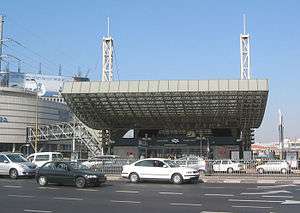
Israel Railways (+972 3-5774000) run trains from Tel Aviv north to Haifa, south to Beer Sheva, and inland to Ben Gurion Airport. Trains to Jerusalem take 90 min, along a slow scenic Ottoman-era line, but a fast line taking only 30 min is undergoing test runs in early 2019. (Jerusalem railway station is far from the main bus terminal and city center.) The coaches are often former Deutsche Bahn double-deckers that seem puzzled to find themselves trundling past orange groves instead of plying the Bremen-Hannover shuttle.
Rush hour on the trains is Sunday morning, when soldiers return to their bases and students to university. Trains finish on Friday afternoons, and resume on Saturdays after dark, in observance of the Shabbat.
Tel Aviv has four train stations, east of the centre along the Ayalon highway. Trains stop at all four stations daytime, but late night trains stop only at Merkaz/Savidor. From south to north, as you'd approach on the train from the airport, these are:
- 🌍 Tel Aviv HaHagana Train Station, 32 HaHagana Way. This is close to New Central Bus Station and HaTikva Quarter and food market.
- 🌍 Tel Aviv HaShalom Train Station, 10 Givat HaTahmoshet St. Exit west (left) to the Azriely shopping mall and towers, and east (right) to Kaplan Street and taxi stand. Many buses run from outside the mall. This is the closest station for walking to Tel Aviv Center, still it's a good 2 km to Kikar Dizengoff.
- 🌍 Tel Aviv Merkaz Train Station (a.k.a. "Arlozorov" and officially named "Savidor"), 10 Al Parashat Derachim St. The busiest and largest train station in Israel. Good for crossing between different train lines, or changing from/to buses. There are two exits: one to Ramat Gan city, close only to the "Bursa" business district and strip-club area. The other exit is to the Tel Aviv 2000 bus terminal where buses to most destinations in Tel Aviv and intercity buses (including to Jerusalem and Haifa) also leave from.
- 🌍 Tel Aviv University Station, 95 Rokah Blvd. Close to the university, Yarkon park, Expo Tel Aviv (Israel Trade Fairs & Convention Center) and "Luna park" (an amusement park).
By bus
Tel Aviv has two main intercity bus stations:
- 🌍
New Central Bus Station (Tahana Merkazit) (southern Tel Aviv). Offers routes to most locations in Israel, within a short walking distance of HaHaganah Train Station. The building, which is a combination of shopping mall and bus terminal spanning 7 floors, is extremely confusing - in fact, it is almost unmanageable for the infrequent visitor; tourists might want to use the 2000 Bus Terminal (see below) instead.
Several different bus companies operate urban and intercity buses in Tel Aviv: Egged, Dan, Metropoline, Kavim and a few smaller ones. Check the electronic boards in departure halls for info on destinations, platforms and coming-up departures. If this doesn't help, ask at the information booths. Egged and Metropoline have information booths on 6th floor. The Dan info booth is on the 7th floor (they also handle info for lines operated by Kavim).
Most intercity bus lines depart from platforms on the north wing of 6th floor, except for buses to Galilee (Afula, Nazareth, Tiberias, Kiryat Shmona etc.) which are on the south wing on 7th floor (accessible by escalator from 6th floor). Most urban lines to Tel Aviv and its suburbs are on the north wing on 7th floor (which isn't connected to the south wing of the same floor), with several lines on 4th floor which is actually at street level (including the popular city lines #4 and #5).
Several urban lines stop outside the station building on Levinski street (north side of the station), and some others a block away to the west on Har Zion street. Sherut taxis depart from Tzemach David street outside the east side of the station.
All people entering the bus terminal are subject to security screening. Be aware of your surroundings and keep and eye on your property while in and around the main bus terminal especially at night, as the area is a high crime area - really Israel's only urban slum. - 🌍 2000 Bus Terminal (Arlozorov terminal) (next to Tel Aviv Merkaz/Savidor Train Station). A more user-friendly bus terminal that can replace the central bus station for most trips. It is next to Tel Aviv Merkaz/Savidor Train Station, so it is a good place to make connections between train and bus. There are information desks, and the platforms are all in two areas that passengers can access without security screening. This terminal and its surroundings are safe at all hours. North-bound intercity buses (from the Central Bus Station to Haifa, the Sharon, the Galilee, etc.) stop at Namir Road alongside this terminal, but at peak times they might be full when they get there. Major cities to the south and east of Tel Aviv have dedicated routes leaving the Arlozorov terminal: the 480 for Jerusalem, 380 for Beer Sheva, and 280 for Ashdod.
In addition to the New Central Bus Station, there used to be an Old Central Bus Station, but this no longer is used for transportation. When people say "Central Bus Station", they mean the new one.
In general, buses obey the Jewish Shabbat, and stop operation on Friday afternoon, and resume service only Saturday after dark. Some services, however, may start earlier on Saturday afternoon. Minor services may not resume until Sunday morning.
A daily bus service is also available to and from Amman through the King Hussein Bridge. Call the operator (+972 4-6573984) for details.
By car
Tel Aviv is the hub of the country's modern network of freeways. The city is easily accessible from Ben Gurion Airport via the Jerusalem-Tel Aviv freeway (route 1), from the north by Tel Aviv–Haifa freeway (route 2), as well as from Beer-Sheva and the southern parts of the country (route 4). Freeways speed limit is 110 km/h. On other intercity roads the limit varies between 80 and 90 km/h. On urban roads the default speed limit is 50 km/h.
Get around
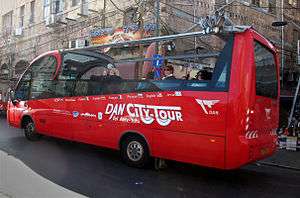
By bus
- See also: Bus travel in Israel
Tel Aviv has a modern, regular, cheap and widespread bus network run mostly by Dan and Egged. Bus services start at 05:00 and stop at midnight, though some of the lines stop earlier. Night buses run until 03:30 (Thursday and Saturday nights all year, plus Sunday to Wednesday nights in summer).
An English-language map of bus routes is available here. Several smartphone apps, such as Moovit, offer real-time bus arrival tracking and trip planning. Most buses and trains now have USB chargers.
From Jan 2019, you can't pay cash on the bus. You need to buy a Rav-Kav smart card from a shop, for ₪5 plus however many journeys you need, in 30 or 50₪ increments. The basic fare within Tel Aviv and its suburbs is ₪5.90; each ride includes transfers. As this arrangement is new, locals are still adapting and cussing it, but it's pretty straightforward. Think about how much is left on your card before travelling to an edge-of-city location that might not have a top-up point: your credit is shown after each swipe-in.
Popular routes include:
- Route 5 connects the Central Bus Station (departure from 4th floor, westernmost platform) in the south with the Central Train Station. It goes through Rothschild Boulevard, Dizengoff Street (including the Dizengoff Center Mall), Nordau Boulevard, Pinkas/Yehuda Maccabi Street and Weizmann Street or Namir Road.
- Route 4 runs north from the Central Bus Station through Allenby road and Ben Yehuda Street.
- Route 18 connects the Central Train Station with the southern neighbourhoods of Jaffa and Bat-Yam. It also has a stop in Rabin Square.
Bus drivers in Tel Aviv speak and understand English reasonably well, and are usually helpful, but always in a hurry. They can't sell or top-up Rav-Kav cards.
Route 100 is a tourist-oriented route which passes by tourist sites all across Tel Aviv. It begins its route on the hour Su-Th 09:00-16:00, F 09:00-13:00, does not run Saturday). See route.
By train
Not yet, the light rail system is expected to open in 2021. You wouldn't use the mainline trains to travel within the city.
By "sherut"
The "sherut" ("sheh-ROOT") or "shared taxi" is a 6-12 seat van-sized minibus which runs on fixed routes, parallel to some bus routes. This alternative is often faster and more frequent than taking a bus. Unlike buses, they operate 7 days a week (on Shabbat too), and when requested will stop in between official bus stops.
In Tel Aviv, sherut service is available on bus routes 4 and 5 (but these taxis don't reach the train station), 16, 51 and 66. You pay after you have found your seat, by passing your fare to the person in front of you, who will pass it along to the driver. If you sit up front, be prepared to pass other passengers' money to the driver and the change back to the passengers. You must tell the driver when you want him to stop. Passengers are not allowed to stand, so if two people want to board and only one seat remains, they will not be allowed to get on together.
By minibus
You can hail a taxi ("mo-NIT", מונית) in the street or call one (with extra surcharge, ₪3.30). Taxis are obliged to give you a metered ride unless you settle for a price, so insist that the driver use the meter ("mo-NEH" in Hebrew, pronounced like the painter "Monet"), unless you are sure what the price to your destination should be. And no, the meter is never broken. A local ride without meter should be ₪20-30 in the downtown core, and up to 50 or 60 to the immediate suburbs. If you go for a price fixed in advance, haggle with your driver a bit, you can generally knock a few shekels off the price. Cutting a deal in advance is especially recommended on Friday night and Saturday and late at night, when there is a surcharge, and during traffic time, because if you get stuck in Tel Aviv's notorious traffic, you won't sit there watching your money tick away.
- Hakastel taxi service, ☎ +972 3-6993322.
- Palatine, ☎ +972 3-5171750.
- Shekem, ☎ +972 3-5270404.
For inter-city rides, the Ministry of Transportation has issued an official fixed price list, covering many municipalities in Israel, if not all of them. These figures are also uploaded to the meter, and when coaxed, the driver will have to check his municipality code list and check the official fare. These lists are only available in Hebrew, so check these prices in advance with the assistance of a Hebrew speaker.
By bicycle
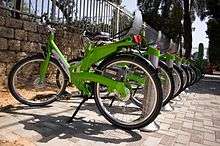
Given Tel Aviv's flat and coastal geography, mild weather, and a growing number of bicycle paths throughout the city - bicycle travel in Tel Aviv is an ideal way to get around. Several shops throughout the city offer bicycle rental, and cheap Chinese made bicycles can be purchased for several hundred shekels on longer stays. A bike rental service called Tel-O-Fun is available in Tel Aviv. (It's a pun - the Hebrew word for "bicycle" is pronounced o-fun-ayim.) Tel-O-Fun offers hundreds of bikes for rent, at rental stations across the city, in a simple and convenient manner using a credit card. An English language Google map of docking stations is available. Be sure to lock your bicycle at all times and don't leave it outside at night - even proper locks get cut by electric cutters in under 15 seconds.
By car
Ayalon Freeway (freeway 20) runs north-south and is the main artery of the city.
It is best to avoid commuter traffic in and out of Tel Aviv and its surrounding cities during rush hours (Sunday to Thursday 07:00–09:00 and 17:00–19:00), particularly entering Tel Aviv via Ayalon Freeway in morning rush hour. A popular and effective navigation app based on traffic loads is Waze. Also, remember that Israeli drivers are considered aggressive in comparison to their Western European or North American counterparts. Signage is in English, Hebrew and Arabic. If possible, avoid using a private car in Tel Aviv and use public transportation.
Speed limits and driving laws are strictly enforced by police. All in all, driving conditions in Israel are much better than in the rest of the Middle East.
Parking in Tel Aviv is hard to find, even for the locals. Parking lots are available, but expensive (usually around ₪25–30 an hour during the day), and can also be full around busier times (i.e., a parking in a central area could be full on a Friday night, when everybody in the area goes out to eat and drink in the city). Parking times and payment is directed by Hebrew-only signs at the beginning of the street. Where parking is available on both sides of the street, instructions are different for every side, and signs are positioned at the beginning of each side. Notice that not all payed parking are marked by blue and white ("kachol-lavan") paint on the curb. When paying to park on the street, there is an hourly parking fee (cheaper than lots), generally between 09:00-19:00 (street signs indicating that are usually just in Hebrew). There are usually no parking meters, meaning you need to use payment apps like Cellopark or Pango. Alternatively, you can buy parking cards in advance from a kiosk or machine, and display them on the window closest to the pavement. Also, some areas of blue-white colored curb are reserved for locals with a zone sticker at certain times of day (mostly 17:00 to 09:00). It is forbidden to park where there are red and white or red and yellow markings, though sometimes only in certain hours, as indicated by signs (but those are usually in Hebrew only as well). The inspectors in Tel Aviv are everywhere and merciless, beware as you can get a fine of ₪100-500! There are generally more parking spaces in the south and the north (north of the Yarkon river that is) than in the center of Tel Aviv.
See
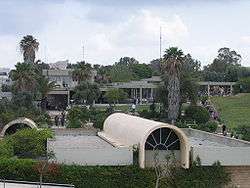
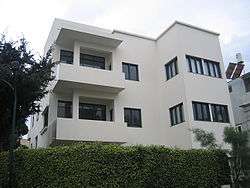
Tel Aviv is a big place, and these listings are just some highlights of things that you really should see if you can during your visit. The complete listings are found on each individual district page alongside many more things to see in each district.
North
Center
- 🌍 Rabin Square. The largest public square in Israel
- 🌍 Carmel Market. The largest and most famous market in Tel Aviv
- 🌍 Habima Square. Home to a number of cultural institutions such as the Habima Theatre, the Fredric R. Mann Auditorium and the Helena Rubinstein Pavilion for Contemporary Art
- 🌍 Azriely Center Observatory. Visitors can climb to the top of the mall for a nice view of the city. ₪22 for adults.
- 🌍 Sarona. A district with restored German Templer architecture, known for its picturesque paths and buildings, upscale restaurants, and luxurious food market.
- 🌍 Dizengoff Centre. Israel's most iconic shopping centre with a very lively food market every Thursday and Friday
- 🌍 Rothschild Boulevard. A lot of Bauhaus architecture, restaurants and cafes in Tel Aviv's prettiest street
- 🌍 Shore Promenade. Also called Tel Aviv beach promenade or "Shlomo Lahat" promenade
South & East
- 🌍 Florentin neighborhood. A previously run-down but beautiful area, which is now gentrifying
- 🌍 Central Bus Station. Planned by overambitious architects, its incomprehensible vastness, multiple levels and intertwining corridors make it a model for what an urban jungle would feel like
- 🌍 Levinsky Market. An extremely colorful outside market
Jaffa
- 🌍 Jaffa Clock Tower.
- 🌍 Old Jaffa & Port. One of the oldest ports in the world, now a must-see, holds various shops, restaurants and events
- 🌍 Flea Market & Bazaar. An outdoor market where you can buy almost anything for low prices
Around the city
- 🌍 Park Ariel Sharon (Hiriya) (The site entrance is on the route 4 freeway south of the interchange with route 461 ("Mesubim junction"). From Mesubim junction, drive south and there will be a turnoff on your right. Unfortunately there is no public transportation access to the site. You could take a bus to Mesubim junction and walk from there in a ditch next to the freeway (700m distance), which is unpleasant but safe enough (the freeway has a guardrail). In winter, parts of this path get muddy and you are unlikely to be clean when you get out of it. So better to try to get a taxi or hitchhike from Mesubim junction.). Daily 09:00-15:30 (it's closed for a few holidays). A large park that is being developed on the southeast outskirts of Tel Aviv. It contains the massive "Hiriya" garbage dump, which is being redeveloped as a nature and recreation site. You can visit the top of the 80m-high garbage mound, which is quite pleasant and has a stunning view of the Tel Aviv skyline. Park your car at the site entrance and wait for a shuttle to take you up (the last shuttle leaves around 15:00). You can also walk up on foot, if you can deal with the smell of a garbage reprocessing facility which still operates (due to the prevailing winds, there are no smells on top of the mound). Free admission.
Museums
Tel Aviv is home to a large number of museums. Some of the best known ones are Beit HaTefutsot (the Museum of the Jewish Diaspora) and the Land of Israel Museum in North Tel Aviv, and the Tel Aviv Museum of Art in the center. Also worth visiting is Bialik Square, a beautiful Bauhaus square including the following museums: Bauhaus Center Tel Aviv, Bialik House, The Museum of Town History, Rubin Art Museum.
While Tel Aviv's population tends to be politically dovish and involved in peace activism, Tel Aviv is nevertheless home to many of Israel's military museums, which record an important aspect of Israel's history. Leading up to 1948 there were a number of different Jewish militias - the mainstream Haganah, the elite Palmach, the right-wing Etzel (Irgun), and the more-right-wing Lehi (Stern Gang) - and each has a museum of its own in modern Tel Aviv. Ideally, one should see two museums corresponding to different parts of the political spectrum - the Palmach Museum and Etzel 1948 Museum are recommended - to get an nuanced overall view. In some museums, you can hear personal stories from veterans who volunteer there - call ahead of time to find out. If you are interested in physical military artifacts like tanks and rifles, the place to go is the IDF History Museum, which has a large connection of these artifacts.
Do
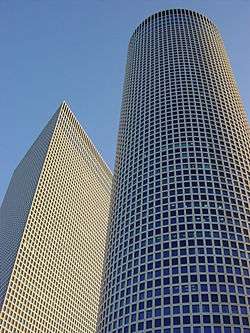
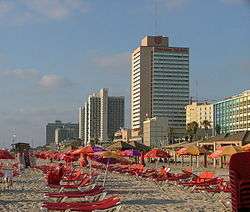

There’s a lot to do in Tel Aviv. For the biggest selection, check out the individual district articles. These are some of the highlights.
Tel Aviv is known as the White City with the world's largest collection of Bauhaus architecture. Enjoy a guided tour of the Bauhaus district.
A visit to Tel Aviv isn't complete without a dip into its fantastic beach scene which is at its best in summer, especially during Friday afternoons, when crowds of buff beachgoers converge to take in the Brazilian drums, the smell of barbecues, the thwock, thwock of "matkot" as the sun sets. In early summer be careful as there may be jellyfish in the water. Ask the lifeguard or locals about the current conditions.
An interesting way of getting to see the city is to rent a bike and bike the length of the coastal boardwalk from Jaffa to Tel Aviv Port, then turning inland and biking along the Yarkon River banks, then returning to where you started. The entire trip is on paved bike paths, and can be as long as 13km each way, or shorter if you prefer.
Performing arts
Tel Aviv has the widest selection of performing arts in Israel.
- Fans of classical music might enjoy Israel's Philharmonic Orchestra and the New Israel Opera.
- The Barby (52, Kibutz Galuyot st., +972 3-5188123), and the Goldstar Zappa (24, Habarzel st., +972 3-6499550) present Israeli (and sometimes foreign) rock daily.
- For more alternative and indie music with occasional jazz shows and electronic parties, head to Levontin 7 named after its street address or The OzenBar.
- Tmuna Theater (8, Shontsino st., +972 3-5629462) alternates between local acts, both famous and unknown, and fringe theater productions in Hebrew.
- Dance can be enjoyed in Suzanna Dellal Center in Neve Tzedek.
- Theater is mostly performed in Hebrew, naturally, but English interpretation is available is some of the shows for extra-fees in Habima National Theater (+972 3-6295555) and HaCameri Municipal Theater.
- Fans of jazz can find great shows at the Shablul club in the Tel-Aviv harbor, with jam sessions every Monday at 22:30.
Sports
Football (soccer) is the most popular sport in Israel. Tel Aviv has 3 major football clubs that are usually in Ligat Ha'al (top division): Maccabi Tel Aviv, Hapoel Tel Aviv, and Bnei Yehudah. All three normally play in the Bloomfield Stadium in the southern part of the city, but it is closed for reconstruction. For the time-being, games are being played out of town.
Basketball is somewhat less popular among locals than football, but the Maccabi Tel Aviv basketball team is well known as the most successful club in Israel and one of the best in Europe, dominating the Israeli basketball league with over 40 championship seasons and 5 European titles. The Hapoel Tel Aviv team is less successful and popular. Maccabi Tel Aviv plays in the Menora Mivtachim Arena in the eastern part of the city.
Matchs between Hapoel and Maccabi Tel Aviv are major events in the city, as the teams are as huge rivals as they come.
Good martial arts clubs abound in various parts of the city, ranging from modern fitness craze sports to traditional ones.
Scuba-diving: there's a couple of dive shacks and centers based near the Marina. Diving in the Med is really for experienced folk: there are interesting wrecks, and fabulous ancient treasures have recently been discovered in these waters. But compared to the Red Sea it's distinctly dark and barren down there, and the weather and sea conditions are tougher. Those wanting to learn, or novice divers, will do much better down in Eilat or elsewhere along the Red Sea coast.
Festivals
Tel Aviv hosts many festivals and events. Something is going on almost every weekend so make sure you're updated!
- White Night Festival. This annual event is a celebration of Tel Aviv's White City's proclamation as a UNESCO World Cultural Heritage Site and organized by Tel Aviv's municipality. During the "White Night", cultural institutions, as well as commercial ones, are open to the public all night long, and many special events take place. In 2019 the event will coincide with the second semi final of the Eurovision song contest in Tel Aviv, though in the past it usually took place late June or early July.
- Tel Aviv Fashion Market. A highly recommended biannual event (winter/summer, for three days each time) where Tel Aviv's top clothing designers show and sell their stuff. Focused on urban clothing. Don't miss this colorful carnival of cutting-edge fashion!
- Night Flea. Every August, Jaffa's burgeoning flea market is active all through the night on weekends, with special events, shows and exhibitions taking place.
- Docaviv, The Tel Aviv Cinematheque, 2 Shprintzak St. Tel Aviv's International Documentary Film Festival. Every year in May, Docaviv presents the most innovative, provocative and important documentary films of the year from around the world.
- The Tel Aviv International LGBT Film Festival, The Tel Aviv Cinematheque, 2 Shprintzak St. Lesbian/gay/bisexual/transgender film festival. Celebrating gender diversity. Happening in June.
- The Tel Aviv International Student Film Festival, The Tel Aviv Cinematheque, 2 Shprintzak St. One of the world's most important student film festivals. Happening in late May.
- Ta'am Ha'ir, HaYarkon Park. 18:00-22:00. "Taste of the City", an annual 4-day food fair, which takes place in Hayarkon Park at the beginning of summer (late May of June). Top restaurants present and sell samples of their finest dishes for special prices. The festival has been held under several names (e.g. Tel-Aviv-Eat), in different locations, and sometimes in cities other than Tel Aviv. Make sure to check the details.
Learn
- 🌍 Tel Aviv University. The largest proper university in Israel (the Open University, though larger, is for distance learning and does not grant doctorates), situated in Ramat Aviv.
- 🌍 Tel Aviv-Jaffa Academic College. A smaller college in Tel Aviv
- 🌍 Afeka. Tel Aviv Academic College of Engineering
Buy
Markets
Tel Aviv's markets are the best show in town, and they're bustling all day long. A Middle Eastern mélange of tastes, scents, sounds, colors – and lots of people. Friday is the busiest day when most Israelis do their shopping until the afternoon. Closed Saturdays.
Tel Aviv's most famous market is the Carmel Market, which mostly sells fruit and vegetables, but also candy, clothing, toys, cellphone accessories, kitchen gadgets, and other goods. It is in Tel Aviv Center not far from the beach. The Levinsky Market, not far to the south, is the best place to buy spices, dried fruits, and different kinds of legume. A more upscale option is the Sarona Market, which has a variety of luxury foods and restaurants in picturesque surroundings. Finally, HaTikva Market in the southeast of the city is reputed to be the most "authentic" market, keeping its atmosphere as the other markets have gentrified somewhat.
If you are interested in furniture, antiques, or arts and crafts, there are markets for this too. At the Jaffa flea market, stretching over a number of streets in the old Jaffa district, you can find almost anything, but it is best for antiques. The Nachalat Binyamin arts and crafts market and Dizengoff antiques and secondhand market in Central Tel Aviv are equally good, but are only open two days a week.
Malls
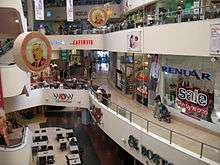
As malls are good places to catch some air-conditioning during hot Israeli summers, they have quickly become a preferred place of entertainment for the locals. The variety is usually mid-range, mainstream, with both international and local brands.
In Tel Aviv Center, Azrieli Center is the busiest mall. This area is also home to Dizengoff Center, the first mall built in Israel, as well as Gan Ha'ir, which is next to Rabin Square.
North Tel Aviv is the most upscale part of the city, and unsurprisingly the Ramat Aviv mall is also upscale.
The New Central Bus Station, designed as a combined bus station and mall, has large numbers of stores which now cater to a lower-class crowd, particularly migrants and workers from Third World countries. There are also a large number of vacant stores.
Shopping streets
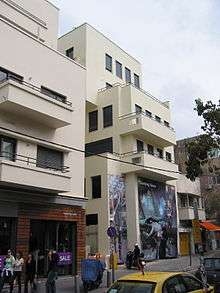
The air-conditioned malls threaten to destroy the concept of shopping streets, but many of the more special ones still survive, particularly in the city center.
Dizengoff Street is popular with the shoppers, as the street is peppered with numerous specialty shops, cafes, and restaurants, as well as the sprawling Dizengoff Center Mall.
Shenkin Street is known for its trendy cafes as well as designer clothing shops.
Second-hand clothing shops are getting very popular in Tel Aviv and you'll find them scattered all over the city.
Books and music
The country's widespread Steimatzky and Zomet Sfarim chains are a good source for current books. Almost every shop has at least a selection in English. Allenby St. has a number of second hand bookshops, most sell (and buy) English books. For music, check out Tower Records shop in the opera tower, on the corner of Alenby and Herbert Samuel. For the more alternative crowd, Krembo Records in Shenkin Street and Third Ear on King George Street will satisfy your needs.
Art, crafts, jewelry, Judaica
Gordon Street is famous for its art galleries. Ben-Yehuda Street has several Judaica/Jewelery/souvenirs shops. You can buy jewelry from Michal Negrin, a world-famous Israeli designer, in her shops at the Azriely mall and on Sheinkin st. The prices are much better than abroad. For more original crafts and Judaica, try the Nahlat Binyamin craft market mentioned above.
Eat
Tel Aviv has an amazing variety of restaurants for every taste.
There are plenty of fast food restaurants, offering both international and local Israeli food. One can get a decent and inexpensive meal, including felafel or hummous on every street corner. You can also eat a toast, sandwich or some other snack at one of the cafes around the city. Many fruit juice parlors are around.
Catit, Raphael and Messa are considered to be Tel Aviv's most elegant restaurants, serving gourmet and unique plates, inspired both by local and foreign cuisine although not kosher. There are many good kosher restaurants in Tel Aviv including Meatos, Bruno and of course 2C which although pricey, offers gourmet food with great views of the city as it is at the very top of the Azrieli round tower.
The city is also known for being one of the best destinations for plant based eating. More than 30 restaurants cater to vegans with a wide range of cuisines and price ranges. The landmarks are Meshek Barzilai in Neve Tzedek, Anastasia on Frishman street and 416 near Sarona. You will also find many plant based options on the menu of most restaurants.
Finally, Tel Aviv's ice cream parlors offer much more than basic flavors, as the taste buds are eclectic and strive for new flavors, such as Halva, poppy seed, and even a touch of alcoholic liqueurs in the ice cream (Try these places: Vaniglia, Iceberg, Gelateria Siciliana, Dr. Lek and Aldo).
Drink

Tel Aviv is called "The city that never stops" by tourists and locals alike. It has a wide range of pubs, bars, clubs and it is known worldwide for its nightlife. The entire city is crawling with nightlife attractions and you would actually have to work pretty hard to find yourself further than 500 meters away from a place to have a drink. People from all the surrounding region come to Tel Aviv to have a drink or a party so on weekends traffic is hectic at late hours and finding a parking spot is somewhere between hard and impossible (so sticking to cabs is not a bad idea). Buses stop running at sundown on Friday and only start again after sundown on Saturday, so if you go out on Friday night you may find yourself forced to take a cab if you cannot walk! But any day is a good day to party in Tel Aviv, not just the weekends.
New places are opening and closing every day and the "hottest spots" change every couple of months, so no internet guide will be able to direct you to the hippest place (even though some may try). Checkout up to date event and party sites. Many places in Tel Aviv have minimum age limitations that vary from 18 to 30. Usually the limitation is different between males and females and while some spots may be flexible others will be as strict as possible.
Israel has no unique drinking culture so any place with any self-respect will have the entire world wide alcohol selection available, from Wine and Beer to Tequila, Arak, Vodka, Whiskey and Cognac. One of the most popular drinks is the local Goldstar beer and the Arabic drink, Arak (it means "sweat" in Arabic) was all the rage in pubs and bars in 2010.
Pubs
The entire city is full of spots to hang out, and there are streets and areas that stand out with even more pubs/clubs, have a look at the districts detailing the scene.
There are a few well-known pubs that specifically cater to foreigners. Mike's Place, next to the American embassy, is an American-style bar which attracts a mostly-Anglo 20-30 something crowd. Molly Bloom's Irish pub and the English Pub, not far from Mike's Place, host many people from the UK and Republic of Ireland.
Clubbing
The Tel Aviv club scene is comparable to those in most European capitals. Top international DJs regularly perform in Tel Aviv, with clubs constantly vying to outdo each other with ever more extravagant parties. Up to date English language party listings are readily available online.
The biggest and newest club in the city is Haoman 17 (Florentin quarter). Other fantastic clubs are TLV, Dome (gay & Offer Nissim is the resident DJ), Vox, Powder, and the "indie" Cafe Barzilay and Studio 46.
Rock clubs, including Barbie Club (Kibutz Galuyot St) and the Zappa Club (in the northeastern neighbourhood of Ramat haChayal), among others, host concerts almost every night of the week.
Billiards (pool) clubs include Gypsy on Kikar Atarim (Atarim plaza)
Gay scene
Tel Aviv is home to the leading gay community in Israel and all of the Middle-East, and is a very friendly city towards gay people. It's safe in Tel Aviv for gay couples to express physical affection to the same extent as straight ones, and can do so on all beaches (the "gay beach" is good for pick-ups, but safety isn't limited to there).
The most popular gay bar in the city is the "Evita" on Yavneh street. There are many gay clubs and parties. Some of which have been running for several years already (Shirazi's FFF line, which is taking place in the 'Haoman 17' club. The electro 'PAG' line). Others are changing from time to time. There is also a gay accommodation.
Most gay clubs have closed as the younger generation of gay Israelis just go clubbing with their straight friends. Many clubs do have gay nights, though.
There is a gay beach in the city, Hilton Beach, named for the Hilton Hotel adjacent to it. It is often full of young gay Israelis, especially in the weekends. Next to Dizengoff Center and on Rothschild Boulevard you may see gay couples walking freely all day long.
Cafés
Coffee shops have been an inseparable part of the Tel Aviv cultural lifestyle ever since the city was founded, as cafés were always the favorite hanging spots of the local bohemia. It is therefore no surprise that Tel Aviv boasts many cafés, which can be found everywhere in the city, offering aromatic Italian Espressos and Capuccinos (called "Hafukh", meaning upside-down, in Hebrew). Espresso-bar, Cafeneto, Café-café and arcaffé are some of the local chain-cafés. Aroma's the biggest among them. Feel free to spend hours in a coffee shop - no one will slap the check on your table or require you to order more stuff.
Bohemian 'Puah' (in the Jaffa flea market), Café Noah, Chic 'Le Central' (Rothschild Av.), and 'Tolaat Sfarim' (Rabin Sq. and Mazeh street near Allenby and Rothschild) are recommended for their very distinctive and Israeli café-drinking experience.
Sleep

Tel Aviv has a wide variety of accommodation options, from camping and backpacker hostels, boutique hotels, right up to luxury 5-star hotels. The main area for a short term stay is in the center with a big hotels strip on the beach and many accommodation options all around. The center should be your default place to stay. Some places can also be found in the south and will usually be cheaper (except the David Intercontinental).
Another option to cut expenses a bit is to sleep in the nearby towns instead of actually staying inside Tel Aviv. This is a very common practice for young Israelis that want the Tel Aviv lifestyle without the Tel Aviv cost. The most common options are Ramat Gan, Bat Yam, Holon and Givatayim.
Cope
Wireless internet
Most coffee shops and fast food places have free WiFi. Tel Aviv municipality operates a free Wi-Fi network called "Free_TLV" in select locations around the city.
Medical services
- Tel Aviv Doctor, Basel Heights Medical Centre - Room 204, 35 Basel Street (on the square), +972 (0) 549 41 42 43. Tel Aviv Doctor provides English speaking medical services that can be claimed back from travel insurance companies.
Embassies
Many details can also be found here: https://www.embassypages.com/israel



























Stay safe
Crime and terrorism
Regular crime rates are much lower in Tel Aviv (and in all of Israel) than in most other cities of similar size. Pickpockets are not a big problem, but you should be aware mostly in HaCarmel Market, Nachlat Binyamin market, the central bus station, the beach promenade and all of Jaffa and the flea market area. Although street crime is rare all around Tel Aviv, it would be best advised to avoid walking parks alone at night, or wandering alone in the southern neighborhoods late at night, which are a bit more rugged (in and around the central bus terminal, and south of Salame/Eilat Street including Jaffa - except Florentin). If necessary, a companion would be a good idea.
Terrorist incidents have decreased in the past decade and are extremely rare. Nonetheless, the usual warnings regarding being alert for bomb threats also pertain to Tel Aviv - beware of suspicious packages in public places (though don't over panic), and suspicious behavior on the part of people around you; if in doubt, report it! The local police are generally very friendly, and many of the law-enforcers can speak understandable English.
Security control checks are a necessary annoyance when entering shopping malls, markets the central bus station, and most hotels, cafes and restaurant. You are frequently requested to let the guards look into your bag. It is best not to find it offensive or intrusive, and this check shouldn't take more than 20 seconds and end with a smile and a green light. It is also advised to carry some sort of identification documents on you at all times. Policeman may rarely stop and ask you for ID, and Israelis are required to carry an ID at all times.
Most Israelis aged 18-20 are doing mandatory army service. So teenagers in uniform are everywhere, and it is not unusual to see what appears to be a group of high school students, dressed like any other high schools students out on the weekend, all carrying rifles.
City buses are safe at all times of day and night, frequent, cheap, reliable and convenient. There is no need to worry about terrorism - it has been years since the last bombing on any Israeli bus. You can always approach the driver with any questions, and passengers are usually keen to assist tourists.
Nature
Tel Aviv has long, hot summers. Be sure to drink lots of water, even if you don't feel thirsty, and use lots of sunscreen.
When going for a swim in the Mediterranean, stick to the patrolled beaches with lifeguards, marked with flags and signs - every year people drown off the Tel Aviv coast when strong currents get them into difficulties. Also, at the beginning of the summer, keep an eye out for jellyfish (called meduza in Hebrew). Remember that during the winter months, though the weather may allow a bathe, the lifeguard service is inactive (official bathing season begins on April 18th and ends late in October).
Go next
- Haifa – The second-holiest city in the Bahai faith, including its great garden down the northern slope of the city.
- Jezreel Valley – Famous for Tel Megiddo (Armageddon) National Park and Mount Gilboa overlooking it.
- Druze Villages in the Carmel Range: 30 min by service taxi (monit sherut) or longer by bus, line number 37א, to the closer village of Isifya or the more distant village of Daliyat el-Carmel. The tourist-oriented bazaar has inexpensive shops and you can top off the visit in one of the excellent Mid-Eastern restaurants.
- Caesarea & Zarqa Bay – Extensive archaeological site north along the coast, and beautiful but not crowded beaches.
- Jerusalem – an ancient city holy to the three Abrahamic religions
- Dead Sea – at the lowest point in the world, it's a sea so salty that virtually nothing can live in it and swimmers float without even trying
- Hebron – BTS offers tours of this city under occupation in the West Bank. Bus leaves from Tel Aviv. Note: this is a very popular tour, and you should sign-up a month in advance.
| Routes through Tel Aviv |
| END ← (highway 20, see below) ← | W |
→ Ben Gurion International Airport → Jerusalem |
| Haifa ← Caesarea, Hadera, Netanya, Herzliya ← | N |
→ (highway 20, see below) → End |
| Herzliya ← | N |
→ Jaffa, Holon, Bat Yam → Rishon LeZion |
| END ← (highways 2, 20 - see above) ← | W |
→ Ramat Gan, Or Yehuda, Yehud → Ben Gurion International Airport |